(Solved) Windows Cannot Initialize the Device Driver (Code 37)
Some Windows users have been reporting a weird problem where certain devices become inaccessible. Upon inspecting them in Device Manager, the Windows cannot initialize the device driver for this hardware. (Code 37) error is displayed as the Device status. Several affected users report that the device is functioning properly (after the initial installation) until the system is restarted.
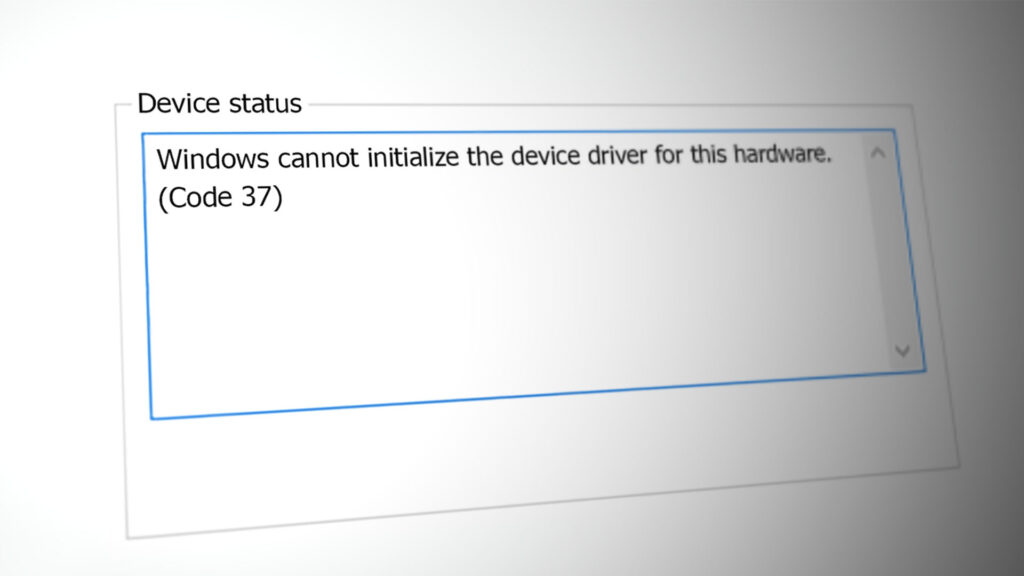
What is causing the Windows cannot initialize the device driver for this hardware (Code 37) error?
- Race condition in the User-Mode Driver Framework (UMDF) driver – This is a well-known condition with Windows 7. if you’re encountering this issue with a smart card reader and the device is showing a yellow exclamation mark next it (in Device Manager), you’re affected by a known glitch that Microsoft has already patched.
- Device driver registry entry is corrupted – This might happen due to a recent install or due to a bad or incomplete uninstallation.
- The device driver is corrupted or incorrectly installed – There where several cases where the culprit was confirmed to be a bad driver installation. For some users, the fix was as easy as uninstalling the faulty driver to allow Windows to install it again properly.
- User-Mode Driver Framework or Kernel Mode Driver Framework (or both) are missing from the computer – This is typically known to occur with users that are trying to connect an Xbox One controller on Windows 7.
If you’re currently struggling to resolve this particular issue, this article will provide you with several verified troubleshooting strategies. In the next section below, you’ll find a collection of methods that other users in a similar situation have used to get the issue resolved.
To make the whole process as productive as possible, we encourage you to follow the methods below in the order that they are presented. You should eventually find a fix that is effective in resolving the issue for your particular scenario.
Method 1: Running the hardware troubleshooter
Before trying anything else, let’s see if Windows is equipped to resolve this problem automatically. Windows 8 and Windows 10 both have decent repair mechanisms that might resolve the issue if the fix is as simple as reinstalling the device driver.
By running the Windows hardware troubleshooter, you’ll subject the faulty driver to an extensive analysis. If the troubleshooter manages to identify any issues, it will automatically run a series of repair strategies in order to get the issue resolved.
Here’s a quick guide on running the Windows hardware troubleshooter to resolve the Windows cannot initialize the device driver for this hardware. (Code 37) error:
- Press Windows key + R to open up a Run dialog box. Then, type “ms-settings:troubleshoot” and press Enter to open the Troubleshooting tab of the Settings application.

Accessing the Troubleshooting tab - Inside the Troubleshoot tab, scroll down to Find and fix other problems, then click on Hardware and Devices and click on Run the troubleshooter.
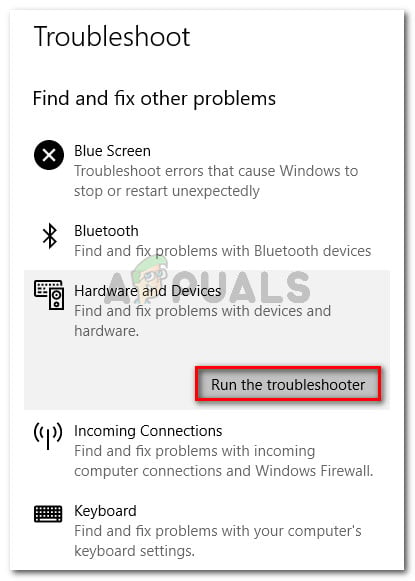
Click on Hardware and Devices and click on Run the troubleshooter - Wait until the initial analysis is complete. Then, if a viable repair strategy is found, click on Apply this fix and follow the on-screen prompts to complete the process.

Click on Apply this fix - Restart your computer and see if the issue is resolved at the next startup.
If the Windows cannot initialize the device driver for this hardware error is still being displayed in Device Manager, move down to the next method below.
Method 2: Install all your pending Windows Update (Windows 7 only)
If you’re encountering this issue with a smart card reader driver that stops functioning at the first restart after the initial installation, you’re suffering from a well-known glitch that has been occurring on Windows 7 and Windows Server 2008 R2.
Microsoft is well aware of this issue and explains that the error occurs due to a race condition in the User-Mode Diver Framework. A few years back, Microsoft released a hot-fix to resolve this issue. But since then, the hotfix is included in the critical updates made available for Windows 7 and can no longer be downloaded from Microsoft’s servers.
The issue is typically encountered by users who are trying to connect an Xbox one controller to a Windows 7 PC. Most likely, you’re seeing the error because your system is missing two key drivers:
Note: If you’re picky about the installs that you let through, use the procedure below to only install these two updates.
If this scenario is applicable to your situation and you’re looking for a way to resolve the issue, the fix is as simple as installing every pending Windows update. Here’s a quick guide on how to do so on Windows 7:
- Press Windows key + R to open up a Run dialog box. Then, type “wuapp” and press Enter to open the Windows Update screen.
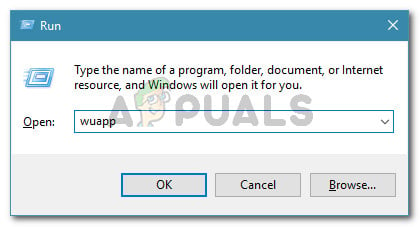
Run dialog: wuapp - Inside the Windows Update screen, click on the Check for updates button and wait for the scan to complete. Then, follow the on-screen prompts to install every pending update.
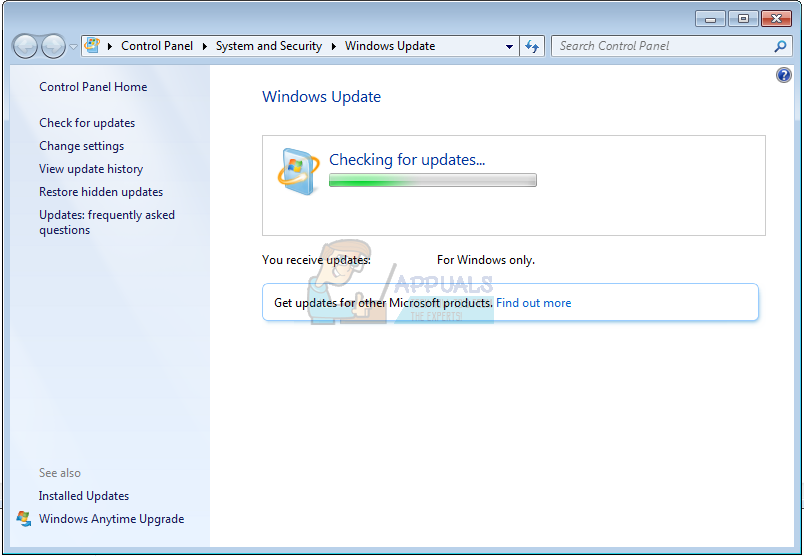 Checking for Updates
Checking for Updates - Once every update has been installed, restart your computer and see if the error has been resolved at the next startup.
Method 3: Reinstalling the Device Driver
Several users encountering the same issue have managed to resolve the Windows cannot initialize the device driver for this hardware (Code 37) error by uninstalling the device driver and allowing Windows to reinstall it properly.
This fix will most likely be effective in resolving the issue if you’ve only started encountering it after an incomplete driver installation. Here’s a quick guide on uninstalling the faulty device driver and allowing Windows to uninstall it.
Note: This fix is reported to be successful on Windows 7, Windows 8 and Windows 10.
- Press Windows key + R to open up a Run dialog box. Then, type “devmgmt.msc” and press Enter to open up Device Manager.

Run dialog: devmgmt.msc - Inside Device Manager, double-click on the device that is showing the error message. If it has an exclamation mark you can typically find it under Other devices.
- In the Properties menu of the faulty device, go to the Driver tab and click on Uninstall (Uninstall Device).
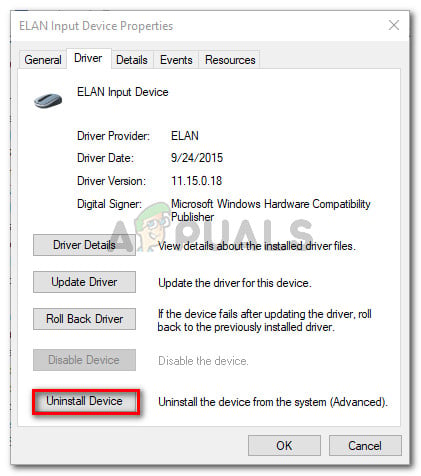
Go to Driver and click on Uninstall driver (Uninstall) - When asked to confirm the device uninstall, make sure to check the box associated with Delete the driver software for this device before clicking OK.
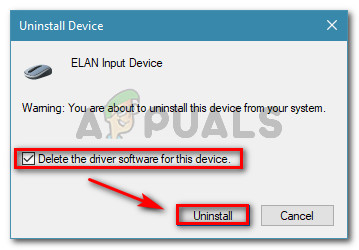
Uninstalling device driver - Once the driver has been successfully uninstalled, disconnect (or unplug) the device physically from your computer.
- Wait a couple of seconds, then plug it back in. After a few moments, you should see how Windows starts rolling the installation in the bottom-right corner.

Windows is installing the device - Once the installation is complete, restart your computer and see if the issue is resolved.




